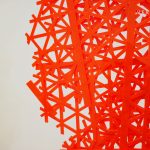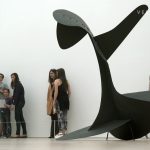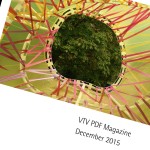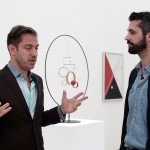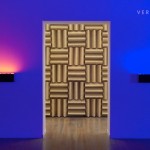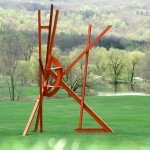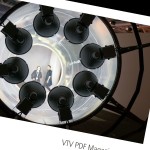With Performing Sculpture, the Tate Modern in London presents the UK’s largest ever exhibition of Alexander Calder, who was one of the ground-breaking artists of the 20th Century and pioneer of kinetic sculpture. Alexander Calder: Performing Sculpture brings together around 100 works and shows how Calder turned sculpture from a static object into a continually changing work to be experienced in real time.
The exhibition features the figurative wire portraits Alexander Calder created of other artists including Joan Miró and Fernand Léger; a selection of panels such as Red Panel and White Panel; motorized mobiles such as Black Frame and A Universe; sculptures animated by just air currents such as Snow Flurry I; mobiles with sound such as Triple Gong; and Calder’s large scale mobile Black Widow.
Alexander Calder: Performing Sculpture / Tate Modern, London. Press View, November 9, 2015.
PS: Click here for more videos on Alexander Calder.
> Right-click (Mac: ctrl-click) this link to download Quicktime video file.
Complete video (7:07 min.):
Excerpt from the press release:
Alexander Calder initially trained as an engineer before attending painting courses at the Arts Students League in New York. He travelled to Paris in the 1920s where he developed his wire sculptures and by 1931 had invented the mobile, a term first coined by Marcel Duchamp to describe Calder’s motorised objects. The exhibition traces the evolution of his distinct vocabulary – from his initial years captivating the artistic bohemia of inter-war Paris, to his later life spent between the towns of Roxbury in Connecticut and Sachéin France.
The exhibition also features the figurative wire portraits Calder created of other artists including Joan Miró 1930 and Fernand Léger c.1930, alongside depictions of characters related to the circus, the cabaret and other mass spectacles of popular entertainment, including Two Acrobats 1929, The Brass Family 1929 and Aztec Josephine Baker c.1929. Following a visit to the studio of Piet Mondrian in 1930,where he was impressed with the environment-as-installation, Calder created abstract, three-dimensional, kinetic forms and suspended vividly coloured shapes in front of panels or within frames hung on the wall. Red Panel 1936, White Panel 1936 and Snake and the Cross 1936 exemplify the artist’s continuous experimentation with forms in space and the potential for movement to inspire new sculptural possibilities. They are shown together with a selection of other panels and open frames for the first time, illustrating this important moment in Calder’s development.
The exhibition includes a selection of his most significant motorised mobiles. Black Frame 1934 and A Universe 1934 reveal the ways in which Calder made use of his training as an engineer and his fascination with the dynamism of the cosmos. By 1932, Calder’s suspended sculptures would begin to move without motors, animated by just the lightest of air currents. In Snow Flurry I 1948, Calder demonstrates his masterful expertise in constructing large-scale mobiles whose equilibrium and reduced palette awards them their sublime quality.
Calder reinvented the possibilities of sculpture in parallel with avant-garde developments in theatre and dance. He incorporated elements of choreography and sound to fundamentally change the principles of traditional sculpture, creating mobiles which chime and resonate such as Red Gongs 1950, Streetcar 1951 and Triple Gong 1951. The exhibition closes with Calder’s large scale mobile Black Widow c.1948, shown for the first time ever outside Brazil,demonstrating how his art in motion turned global after WWII and came to serve as a visual metaphor for a new and free social order.
Alexander Calder: Performing Sculpture is curated by Achim Borchardt-Hume, Director of Exhibitions; Ann Coxon, Curator; and Vassilis Oikonomopoulos, Assistant Curator; and is organised in close collaboration with the Calder Foundation.
